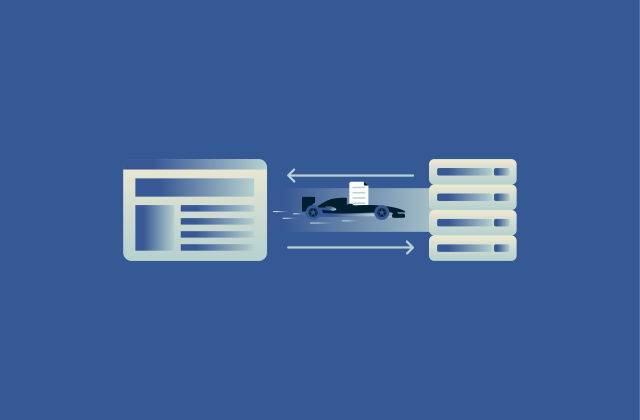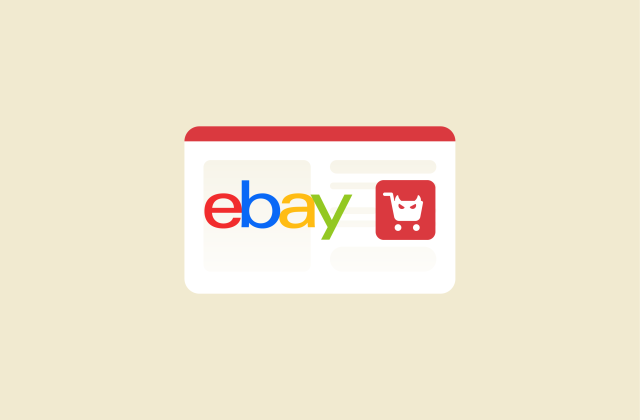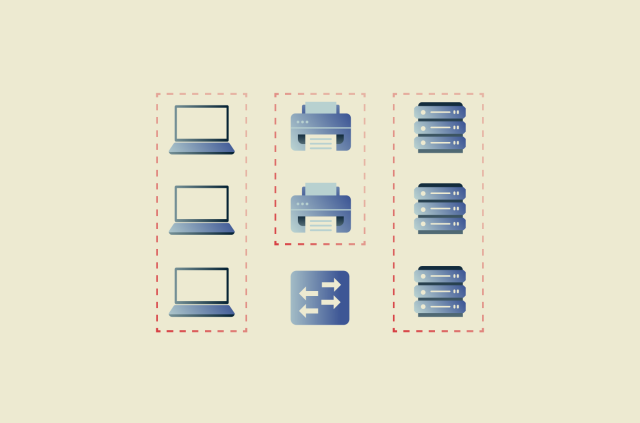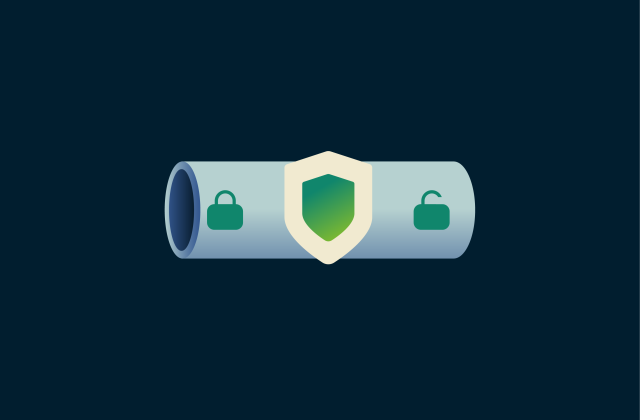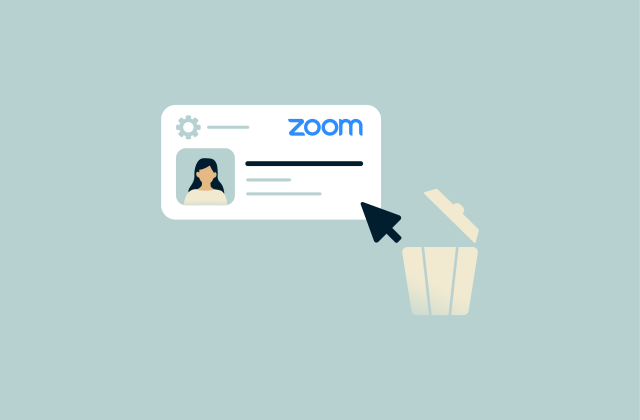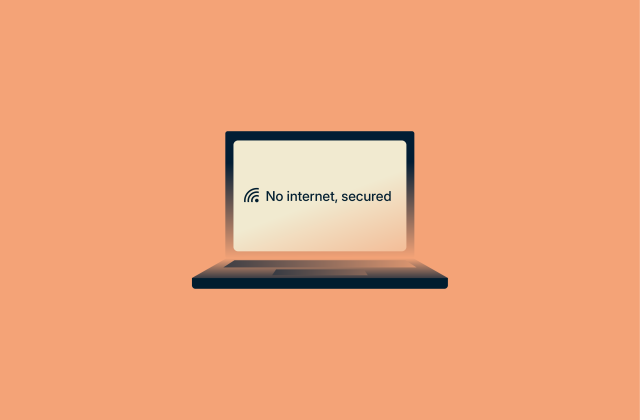Web2 vs. Web3–What are the key differences?

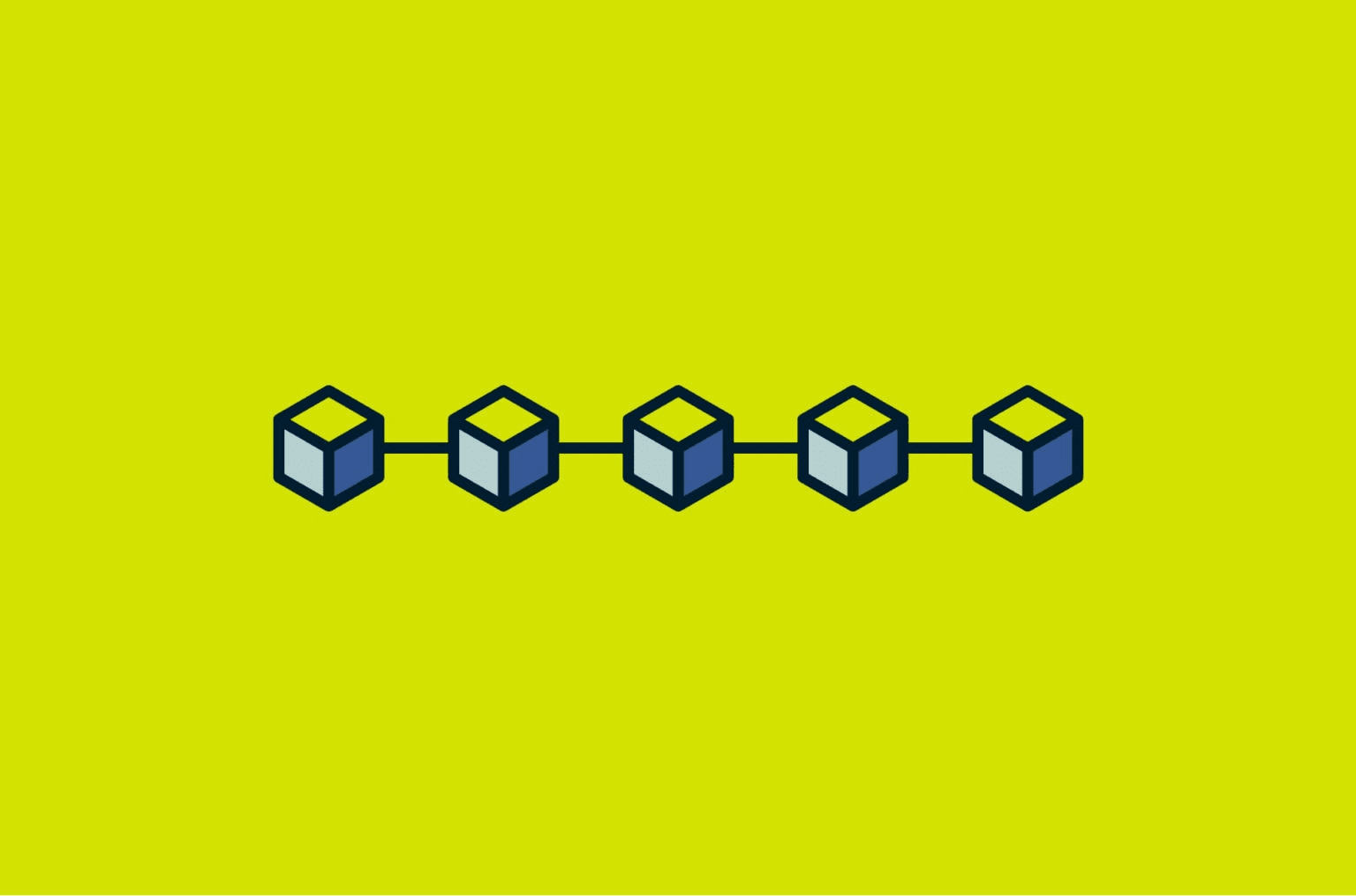
The internet is shifting profoundly. Web2 (the current internet era) is largely defined by big tech companies controlling platforms and user data. It gave us platforms where we can share videos, chat with distant contacts, and shop from our couches. Web3 is emerging as a different model focused on decentralization and user ownership of data. It aspires to a blockchain-powered internet where individuals own their data and online assets.
You might have questions: What is Web2? What is Web3? How do they differ, and what does Web3 mean for you? This guide answers these questions by comparing Web2 vs Web3 while highlighting key differences, pros and cons, real-world examples, and future insights.
Regardless of Web2 or Web3, online security and privacy remain paramount. Strengthen your online security with ExpressVPN. Browse and interact on any platform with peace of mind, knowing your data is guarded by best-in-class encryption. Enjoy a fast connection across thousands of servers worldwide.
What is Web2?
Web2 is the second generation of the internet, where user participation, interactive platforms, and centralized services became common. In this model, large corporations often store and control user data. Unlike the early “read-only” Web1.0, Web2 is a “read-write” web where users consume content and create and share it.
Many popular sites in this generation focus on connecting people and letting you upload your own content. Think of video-sharing platforms, social networks, and review sites—essentially, websites where you can interact and contribute content in real-time. These services feel smooth and familiar. They are convenient, with easy interfaces and massive user communities.
Yet Web2 has drawbacks. A defining trait of Web2 is centralization. Most Web2 services are run by companies that control the platforms and servers. For example, when you post on Instagram or YouTube, your data goes into centralized servers owned by those companies. This centralization made the internet more user-friendly and accessible; you can log into multiple sites with one account (e.g. your Google or Facebook login), and content is delivered quickly worldwide using large data centers.
It also means a few corporations hold the power—they manage user data, control what content is allowed, and often monetize user information through advertising. Over time, users have become aware that their information can be sold or tracked without explicit permission. This level of central authority can also mean censorship or restrictions—some content might be removed if it conflicts with a platform’s policies.
What is Web3?
Web3 is the next iteration of the internet, powered by blockchain applications and decentralized networks. It aims to flip the internet’s power structure. Users connect directly across distributed systems instead of relying on a single company to store data. This approach places a stronger emphasis on ownership, transparency, and user autonomy.
When you think about Web3, words like decentralized finance, smart contracts, and cryptocurrencies might come to mind. Blockchain networks power these transactions, making it possible to exchange digital assets without going through a bank or large payment processor. Web3 is also growing fast in areas like digital identity management, data ownership, and gaming.
Some describe Web3 as an internet owned by participants rather than corporations. Blockchain records keep track of who owns what, and these records aren’t locked inside a company’s private servers. This approach addresses many concerns tied to Web2, like data exploitation or the excessive influence of huge platforms.
Web3 is still in its early stages, but it can potentially create an internet that is more open, private, and user-centric. That said, Web3’s decentralization comes with its own challenges, such as complexity and scalability issues. Before we get into that, let’s break down the key differences between Web2 and Web3 in technology and user experience.
Read more: What is Web3?
Web2 vs. Web3–Key differences in technology & user experience
To understand Web2 vs Web3, let’s compare them across six major aspects, including examples of each:
Quick comparison table: Web2 vs. Web3
| Aspect | Web2 (Current Web) | Web3 (Decentralized Web) |
| Architecture | Centralized servers and databases managed by companies. | Decentralized networks (blockchains, P2P nodes) with no single owner. |
| Data ownership | Platforms own and control user data (in “walled gardens”). Users have little control. | Users own their data (stored on blockchain or user-controlled wallets) and can port it between services. |
| Control & governance | Corporate-controlled platforms (decisions by company or centralized authority). | Community governance (users vote via tokens/DAO) or predefined smart contract rules – no central kill switch. |
| Privacy & Security | Users’ data and content secured by company, but large breaches possible; privacy depends on trust in platform. | Cryptography secures data on a public ledger (transparent yet pseudonymous). No central database to breach; users control what to share. |
| Monetization Model | Advertisements, selling user data, subscription fees. Platforms profit most; creators get a share. | Tokens and cryptocurrencies fuel the economy. Users and creators earn via crypto rewards, NFTs, play-to-earn, etc., often gaining a direct stake. |
| Interoperability | Limited—platforms are siloed. Integration via APIs if allowed; accounts don’t carry over between apps easily. | High—data and assets (tokens) can be interoperable across dApps. One wallet can log into many services; standardized protocols enable cross-platform identity. |
| Examples | Facebook, YouTube, Amazon Web Services, Google (centralized apps and infrastructure). | Bitcoin, Ethereum, Uniswap (DeFi dApp), IPFS (decentralized storage), Decentraland (metaverse world). |
Centralization vs. decentralization
Web2 is largely centralized—think of a hub-and-spoke system. For instance, on X, all tweets pass through X’s servers; the company can moderate or remove any content. This model brought ease of use and consistency. You sign up with an email address, and everything just works—until a platform decides to take your content down, block your profile, or alter terms without warning.
Web3 embraces decentralization. Instead of one central hub, networks of independent nodes work together. A social network in Web3 might consist of many servers run by different people (more like a federation) or operate entirely on a blockchain. This means no single entity can easily censor or control the whole network. If one node goes down, the network continues via other nodes – improving resilience. This approach strengthens user freedom, though it can bring complexities in scaling and support.
Fig 1: Centralized vs. decentralized networks: In a centralized model (left), users connect to a single hub (e.g. one social platform). In a decentralized model (right), users connect through a network of multiple nodes without a single point of failure.

Data ownership–Who controls the information?
In Web2, the phrase “users are the product” often rings true. Your data, from the posts you like to your personal details, typically resides in company databases. Companies like Facebook and Google use this data for targeted ads and algorithm training. Once you upload content, your rights are limited; platforms can ban accounts, potentially losing years of your data. Moving your data between services is also difficult, like trying to export your Facebook friends list.
Web3 offers a different approach. You own your data, storing it in decentralized networks or crypto wallets, which act as proof of ownership on the blockchain. Unlike Web2, where companies profit from your data without sharing the value, Web3 allows users to directly monetize their content. For example, you could sell your digital creations as NFTs or earn tokens by contributing to a network. However, this ownership comes with responsibility; losing access to your Web3 wallet means potentially losing your data permanently, as there's no central recovery system.
Privacy & security–How safe is your data?
Using Web2 often means trusting companies with your personal information. However, if a central server is hacked, personal details are easily exposed. One breach can leak millions of usernames, passwords, or payment details. Companies might face strong incentives to safeguard your data, but the centralized approach means a single target can yield big rewards for cybercriminals.
Web3 aims for stronger privacy through cryptographic methods and decentralized storage. Transactions on a blockchain are viewable, but personal details remain private unless you decide to disclose them. That said, user security depends on handling private keys responsibly. A lost or stolen key can mean permanent loss of digital assets, so caution is vital.
Even in Web3, it’s wise to use additional privacy tools. For example, using ExpressVPN can conceal your IP address when you connect to dApps or blockchain nodes, adding an extra layer of anonymity. It also encrypts your web traffic (Web2 or Web3) to protect against eavesdroppers. While Web3 promises better intrinsic security, a VPN ensures that your connection and data remain private and secure from your ISP or any network snoopers – a smart practice in both worlds.
Monetization & business models
Web2 largely relies on advertising and platforms. Free services earn by showing ads or selling aggregated data. Creators depend on platforms like YouTube and Twitch, which take a significant portion of profits, indirectly compensating users with their data and attention. This data, including location and browsing habits, enables precise ad targeting.
Web3 shifts towards tokenized, creator-focused models. Value is distributed via tokens, allowing users to have a stake in platforms. Creators can earn directly from their community through play-to-earn games and NFTs. Still, these methods can be complex for new users, especially with fluctuating digital currencies.
Interoperability–How systems communicate in Web3
In Web2, ecosystems are often siloed. Your data on one platform usually stays there, and services may not talk to each other unless through carefully managed APIs or third-party agreements. For example, you can’t easily import all your Twitter followers to a new social network. The interoperability is low by design to keep you within these platforms.
Web3 aims for broader interoperability. Many decentralized apps use open-source standards, meaning one wallet could interact with multiple dApps. For instance, if you hold an NFT in your wallet, you might display it in a metaverse setting, trade it in a play-to-earn game, and list it on a marketplace—without losing track of it across platforms. The result is a more fluid experience where data and value can flow across applications. For users, this means less lock-in: you’re not forced to stay on a service just because all your data is there. It also encourages innovation – new apps can be built on top of existing decentralized infrastructure without needing permission.
Having covered the fundamental differences, let’s weigh the pros and cons of Web2 and Web3 to see the strengths and weaknesses of each.
Read more: What is a decentralized VPN and how do they work?
Pros and cons of Web2 and Web3
Advantages of Web2
Accessibility and ease of use
Web2 has made the internet incredibly accessible. You don’t need to understand how a server works to start a blog or post a video—user-friendly platforms handle the technical details. This ease of use comes from centralization: companies streamline the experience. Accounts can be recovered, passwords reset via email, and customer support is available for many services.
The familiar interfaces and consistent user experience of Web2 apps have onboarded billions of people online. From a user perspective, Web2 is straightforward – just sign up with an email, and you’re good to go. This low friction and intuitive design have been key to global internet adoption.
Fast implementation and global connectivity
Because Web2 relies on centralized infrastructure, rolling out new features or scaling up is relatively fast for companies. If Facebook wants to introduce a new feature, it can update its servers and app, and billions see it immediately. This agility and efficiency have led to rapid innovation. Additionally, Web2 has achieved global connectivity – massive platforms link users worldwide. You can instantly communicate with someone across the globe on Web2 social networks. Content and information spread at lightning speed (for better or worse), which has made the world more connected and informed.
From a developer’s perspective, Web2 also has mature tools and hosting services. Launching a website or app can be done in minutes on cloud platforms (like AWS, Google Cloud). There are established frameworks and APIs to build on. This means faster development cycles and the ability to iterate quickly based on user feedback.
Stable infrastructure and widespread adoption
Web2 has been in place for years, with billions of users. Standards, user expectations, and industry norms are well established. You can rely on tried-and-tested payment processes, content sharing, and hosting. If you’re curious about launching a personal website, you might ask, “How much is web hosting?” The answer is straightforward since many hosting providers have decades of experience serving Web2 customers.
Disadvantages of Web2
Centralized control and censorship
Web2’s centralized nature means control lies in the hands of a few companies. These entities can unilaterally make decisions that affect millions. For instance, a platform can change its terms of service or algorithms, and you have little recourse but to accept it. That is convenient if they’re removing harmful content, but it also raises questions around fairness and free speech. If your content is flagged mistakenly, you could lose access to your audience with little recourse.
Privacy issues and data exploitation
In Web2, users often have to trust platforms with sensitive data, and history has shown that this trust is not always well-placed. Central databases of user information present juicy targets for cybercriminals, resulting in frequent data breaches, from credit card info leaks to billions of passwords dumped online.
Beyond malicious breaches, there’s the issue of how companies themselves use your data. Web2 businesses have built detailed profiles on users – tracking browsing habits, location, purchasing behavior, etc. – often without users fully understanding the extent. Privacy can be compromised not only by outright leaks but by opaque data-sharing partnerships and surveillance capitalism. Notorious examples include the Cambridge Analytica scandal, where Facebook data was misused to profile voters.
Monetization of user data
Web2 platforms largely run on a data-driven advertising economy. This means companies offer free services but profit from your usage and data. Social media sites, search engines, and many apps gather as much data as possible to feed algorithms that keep you engaged and serve targeted ads. This has several negative side effects:
- users rarely get a share of the enormous revenue generated from their data and content
- it creates incentives for platforms to maximize engagement at all costs
- leading to issues like clickbait, misinformation spread, and addictively designed apps.
From a user perspective, this is a raw deal – your data is being sold, and you get ads in return. In Web2, value is centralized: the platform and its shareholders benefit the most, whereas users and creators have relatively little power or share in the wealth created.
Advantages of Web3
Decentralization – more freedom and security
Web3’s decentralized architecture brings a fundamental freedom from centralized control. Censorship becomes much harder because no single entity controls a truly decentralized network. For example, if you publish a piece of content on a decentralized network (like content stored on IPFS with a hash address and indexed on a blockchain), no central authority can simply delete or block it, the data resides across many nodes globally.
This resilience is a boon for free expression and for users in restrictive environments. It can also lead to more robust services (no single point of server failure). From a security standpoint, decentralization means there isn’t one giant database of user data to hack. Data breaches that leak millions of users’ info become less likely because data isn’t centralized in one place. Additionally, Web3 networks are typically open source, allowing public auditing of code (so the community can spot vulnerabilities). Trust is placed in math and code rather than in corporations.
Full ownership and control of personal data
One of the most empowering advantages of Web3 is the idea of self-sovereign data. Blockchain-based systems grant you the final say over your information. You can store digital art, documents, or tokens in a wallet that you alone manage. If you want to move your digital assets or content to another platform, you aren’t stuck. That can be a major shift from Web2, where your profile or content might be locked into a specific site.
New economic models (NFTs, tokenization, play-to-earn)
Web3 encourages new ways to monetize work. NFTs (non-fungible tokens) let you mint unique items on the blockchain. Play-to-earn games reward you with tokens for spending time in the virtual world. Digital artists can tokenize and sell their creations directly, bypassing gatekeepers and letting collectors prove authenticity on-chain.
These new models mean monetary value on the internet is becoming more user-centric. Creators and users can capture more of the value they create, rather than all value accruing to a central platform. It’s an exciting aspect of Web3 that has led to a surge of innovation and entrepreneurship.
Disadvantages of Web3
Complexity and learning curve
Despite its promises, Web3 today can be complex and intimidating for newcomers. Setting up a crypto wallet, safely managing private keys, understanding gas fees, and navigating decentralized apps is a far cry from the plug-and-play ease of Web2. Mistakes in Web3 can be costly. If you send funds to the wrong address or lose your seed phrase, there’s no customer support to undo it. This puts a lot of burden on individuals to educate themselves and stay vigilant against scams (which are unfortunately common in the space).
Web3 is powerful but not yet as user-friendly, making it feel exclusive to tech enthusiasts at times. Bridging this gap and making decentralized apps as easy as using Facebook is a challenge the Web3 community is actively working on, but it remains a disadvantage in the present day.
Scalability and speed challenges
Decentralized networks, especially blockchain-based ones, face scalability issues. In Web2, a central server can handle thousands of requests per second and can be upgraded easily by the provider. In Web3, reaching consensus across a distributed network is slower by design. For instance, high volumes of on-chain activity might cause spikes in transaction fees and confirmation times. This can disrupt user experience, making Web3 apps seem sluggish compared to familiar Web2 services.
Regulation and legal uncertainty
Web3 exists in a legal gray area in many parts of the world. Because it’s so new and breaks the traditional models, governments and regulators have not uniformly figured out how to handle it. This creates uncertainty for both developers and users. We’ve seen instances of regulatory action: governments banning or restricting crypto trading, the SEC in the U.S. pursuing certain ICOs as unregistered securities, or tax authorities trying to pin down how to tax crypto earnings.
Read more: Why the world must demand a decentralized internet
Next, let’s explore real-world applications of Web3 that are already emerging, showing how these principles are being put into practice.
Real-world applications of Web3
Decentralized finance (DeFi)
DeFi platforms are reshaping financial services by removing banks and traditional intermediaries. You can lend, borrow, or earn interest simply by connecting a crypto wallet to a DeFi app. Protocols often rely on smart contracts that automate processes. This reduces overhead and can boost transparency.
Some see DeFi as an alternative system that might cut out major financial players. Others think it’s an experiment that needs clearer rules. Either way, the concept of decentralized finance is at the heart of the “what is Web3 in crypto?” conversation.
DAOs – decentralized autonomous organizations
A DAO is essentially an organization or community that is governed by smart contracts and blockchain-based voting, rather than a conventional corporate hierarchy. Each member might hold tokens that grant voting rights. Proposals are made, and token holders vote, with no central manager needed. This model has been used for collective decision-making in investment clubs, charitable causes, and more.
The metaverse and virtual economies
You may wonder, “what does Web3 mean for virtual worlds?” The metaverse refers to immersive virtual worlds where people can socialize, work, and play—essentially a next-generation internet experienced through virtual/augmented reality. While the full vision of a Ready Player One-style metaverse is still in progress, Web3 is playing a key role in building its foundation by enabling ownership of digital assets and interoperability between virtual environments.
Web3 in the gaming industry
Web3 gaming often features play-to-earn methods, token-based in-game assets, and true item ownership. If you earn a rare sword, you might sell it on a decentralized marketplace without needing approval from the game publisher. That sense of real ownership can change how gamers think about achievements and collectibles.
Digital identity and data verification
Web3 is also reshaping how digital identity works. In the current Web2 world, our digital identities are fragmented across services (email accounts, social media profiles, etc.) and often verified by centralized authorities (governments, banks for KYC, universities for credentials). Web3 introduces the idea of a portable, self-sovereign digital identity that you control and that can be universally verified through blockchain.
Web2 vs. Web3 – how does this affect you?
All this technical talk boils down to a simple question: how will the transition from Web2 to Web3 impact your daily internet use? And what should you, as an individual, do to adapt or prepare? Let’s look at what these changes mean for everyday users.
How will Web3 change the way we use the internet?
If Web3 reaches its potential, it could shift control back to users and create a more open, user-driven internet. You might truly own your digital goods—like music, books, or game items—without relying on platforms.
A single digital identity could replace countless logins, making access seamless. You could choose which apps to use without being tied to central gatekeepers. Financial transactions might blend into everyday browsing, letting you earn or spend tokens as you go. Privacy could improve with decentralized services that collect less data. But you’d also take on more responsibility for securing your digital assets and identity.
Are decentralized social networks the future?
The future might not be an either-or but a coexistence. We might see some mainstream platforms incorporate decentralized elements. X’s former CEO Jack Dorsey has pushed the idea of a decentralized social media protocol; and Meta has experimented with NFTs on Instagram. Meanwhile, decentralized social networks can carve out significant spaces, especially among communities passionate about privacy, crypto, or freedom from big tech.
interaction happens on networks where users own their data and community governance is the norm. The benefits are clear – no single company can flip a switch to delete your account or change the rules arbitrarily. But to be the future, these networks must reach a level of usability and popularity to compete with giants. As of now, we’re seeing early momentum but it’s too soon to declare victory. What’s certain is they are pushing the conversation on what social networking could look like beyond Web2.
How to prepare for the transition to Web3? (Practical tips for users)
- Learn the basics of blockchain: Get familiar with terms like tokens, smart contracts, and staking. This knowledge helps you understand how Web3 apps work under the hood.
- Set up a Web3 wallet: Try a wallet that can store tokens or NFTs. This is your gateway to many Web3 services, from decentralized finance to gaming.
- Stay informed about security: Watch out for scams. Fraudsters may trick you into sharing private keys. Also consider a VPN for an added layer of protection against malicious networks.
- Experiment with small transactions: Engage in a decentralized application or NFT platform with modest amounts. This hands-on approach is the quickest way to learn.
- Explore Web3 communities: Forums and chat groups are helpful if you get stuck. Participate in discussions to pick up tips and best practices.
The future of the internet – what comes after Web3?
Will Web3 replace Web2 or will they coexist?
In the foreseeable future, Web3 is likely to coexist with Web2, rather than completely replace it since a massive chunk of the world still uses centralized apps. Think of email: Email is built on open protocols (a bit like a decentralized system, since no one company owns email), yet we all use it alongside proprietary messaging apps (like Slack or WhatsApp). Both coexist. Similarly, Web3’s open, decentralized protocols might sit alongside closed platforms. Over time, if Web3 solutions become as convenient and far more beneficial (e.g. more private, rewarding, and secure), they could eclipse Web2 alternatives in popularity. But it’s likely a long evolution, not an overnight switch.
Key challenges for mass adoption of Web3
- User experience: Many Web3 interfaces still feel unwieldy for beginners. Projects need to streamline sign-up, transaction steps, and wallet management.
- Performance constraints: Decentralized networks can be slow or expensive if too many people flood a blockchain. Scalability solutions are on the rise, but they aren’t universal.
- Regulatory uncertainty: Governments haven’t fully clarified the rules on tokens, decentralized apps, or crypto-based commerce. This can deter big businesses or mainstream users from diving in.
- Security risks: If you lose your private key, your assets are gone forever. That level of personal responsibility can scare off those used to password resets and help desks.
Web4 and artificial intelligence – the next evolution
Some experts describe future versions of the internet that combine decentralization, AI-driven personalization, and advanced automation. Your devices might perform tasks without traditional servers or third-party oversight in that environment. Web4 concepts could merge machine learning with user-owned data. It’s too early to predict the shape of Web4. Artificial intelligence is advancing swiftly, so the next wave might incorporate AI-powered tools that further reduce human oversight in routine processes.
Let’s address some frequently asked questions about Web2 vs Web3:
FAQ: About Web2 vs Web3
How can beginners get started with Web3?
Is Web3 safe and secure?
What are the most popular Web3 projects?
How does Web3 change online monetization?
What is an example of Web3?
Is Ethereum part of Web3?
Can I learn Web3 without knowing Web2?
Take the first step to protect yourself online. Try ExpressVPN risk-free.
Get ExpressVPN
